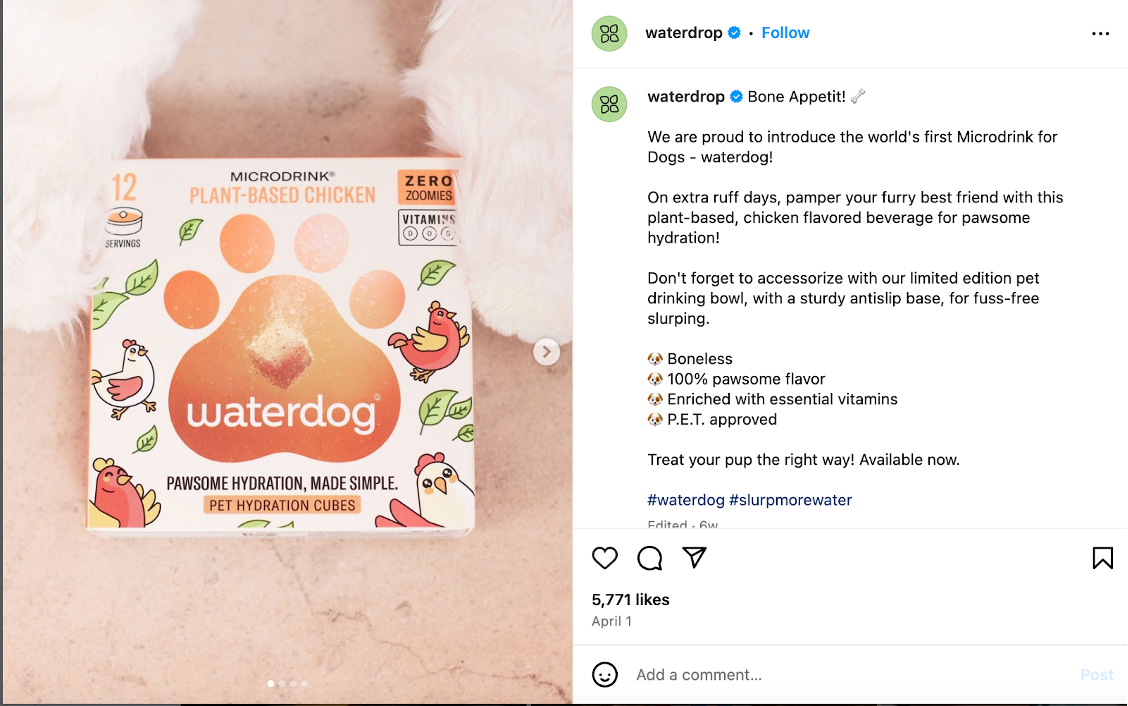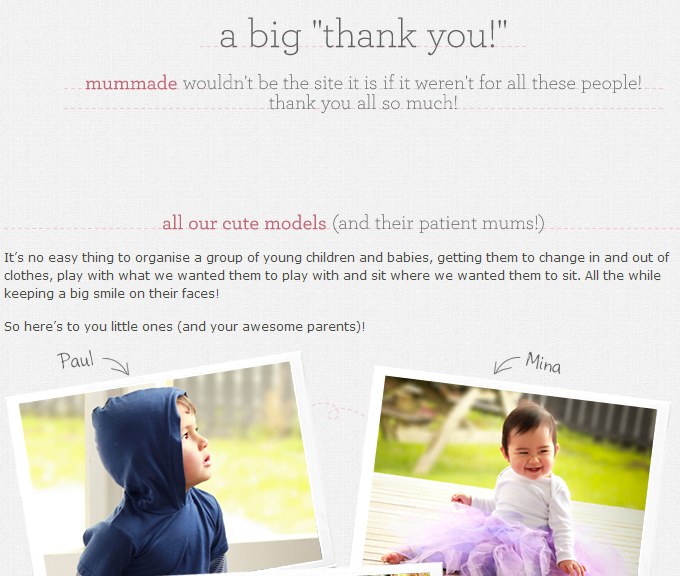- Blog
- How to Make Your Online Store Stand Out in a Crowded Market (12 Proven Tips)
How to Make Your Online Store Stand Out in a Crowded Market (12 Proven Tips)
-
Nikolett Lorincz
- Ecommerce
- 6 min read
Table of Contents
Today it seems like anyone can start a successful ecommerce business.
However, with increasingly tight competition, it’s no longer enough to have a responsive website with a perfect landing page and a seamless checkout procedure — as if that wasn’t enough on its own.
To really stand out from the crowd, you’ve also got to display a sense of personality on your site to build intimacy with your customers.
In this post, we’ve collected 12 easy-to-implement tips that are proven to add a sense of personality to your ecommerce site and build intimacy with your customers.
Let’s get started!
12 tips to make a successful online store
These 12 proven tips will equip you with the tools and insights needed to elevate your online store above the rest. Whether you’re just starting out or looking to refine your existing operations, these helpful tips will guide you toward achieving e-commerce business success.
1. Develop a unique concept
A unique e-commerce website concept is essential for standing out and capturing new customers’ interest. A distinctive and memorable concept not only grabs attention but also creates a lasting impression that encourages repeat visits and loyalty.
Your uniqueness can manifest in various ways, from the visual design to the overall customer experience.
Consider the following elements to make your site stand out:
- Unique colors: Choose a color scheme that reflects your brand’s personality and sets you apart from competitors. Vibrant, unconventional colors can draw the eye and create a memorable visual identity.
- Interesting layout: Design a layout that is both visually appealing and user-friendly. An innovative layout can guide visitors through your site seamlessly, making their shopping experience enjoyable and efficient.
- Innovative presentation: How you present your products matters. Use high-quality images, 360-degree views, or even augmented reality to give online shoppers a comprehensive look at what you’re offering. Unique presentation methods can enhance the perceived value of your products.
- Distinctive tone of writing: The way you communicate with your audience sets the tone for your brand. Whether it’s through product descriptions, blog posts, or customer service interactions, a distinctive and consistent voice can make your brand more relatable and trustworthy.
Check out Drunk Elephant’s online store which effectively uses bright, bold colors. Their color scheme not only catches the eye but also reflects the fun, vibrant nature of their brand, making their site instantly recognizable.
Plus, their layout is modern and unique. The arrangement of content and products keeps visitors engaged and makes browsing effortless.

2. Use humor
While many successful e-commerce websites maintain a serious tone, incorporating humor can be a powerful tool in your marketing strategy.
Humor has the ability to humanize your brand, making it more relatable and engaging. It can break down barriers and win over even the most skeptical customers by creating a sense of connection and trust.
However, using humor effectively requires a thoughtful approach.
The first step in using humor is understanding your target audience. What makes them laugh? What type of humor do they appreciate? Tailoring your jokes and witty remarks to your audience’s preferences ensures that your attempts at humor are well-received.
Only use humor in areas where it feels natural and enhances the user experience. This could be in product descriptions, social media posts, email campaigns, or even error messages on your site.
A great example of a brand successfully using humor is Waterdrop. They entertained their audience with an April Fool’s joke on Instagram by announcing “Waterdog,” which they jokingly claimed was the world’s first microdrink for dogs.
The post generated significant engagement, with many people loving the joke and some even wishing it was real.

Important note: Always keep your humor appropriate and inclusive. Avoid controversial or offensive jokes that could harm your brand’s reputation. The goal is to entertain and engage, not to offend.
3. Display social responsibility
Corporate social responsibility (CSR) is a powerful way for online stores to demonstrate their commitment to the community and the environment.
It’s a chance to show a side of your company’s brand that goes beyond products and profits, reflecting a deeper sense of purpose and ethics.
Integrating social responsibility into your business and marketing strategy not only aligns with ethical standards but also resonates with today’s socially conscious consumers.
Many customers are willing to support companies that prioritize ethical practices, even if it means paying a premium.
Choose causes that resonate with your brand values and target audience, and make sure that you display your CSR initiatives on your website. This could be through dedicated pages, blog posts, or prominent banners on product pages. Transparency about your efforts and impacts can build trust and credibility.
A great example of a company successfully integrating CSR is the TOMS online store.
When customers buy TOMS products, they contribute to funding mental health resources for millions of people.
TOMS commits 1/3 of its profits to good causes through cash grants and deep partnerships with community organizations, driving sustainable change. This commitment not only helps those in need but also enhances TOMS’ brand appeal, making it more human and relatable.

4. Give your shop a human face
Humanizing your online store by attaching real faces to it can significantly enhance customer connection and trust.
When customers see actual people behind the business, it personalizes their experience and transfers their positive impressions to your site.
Here’s how to effectively give your shop a human face:
- Use genuine photos of the owner, team members, and even behind-the-scenes snapshots.
- Dedicate a section of your website to introduce the people behind the store.
- Showcase the contributions and expertise of your team members.
- Incorporate personal messages from the founder or key team members.
- Video introductions and behind-the-scenes footage can be highly effective
A great example of this approach is Lammle’s Western Wear. Their “About Us” page introduces the people behind the online store, sharing photos.

5. Show gratitude to your helpers
Expressing gratitude is a powerful way to add personality to your site and connect more deeply with your audience. Psychological studies show that gratitude significantly enhances well-being, creating a warm and positive atmosphere for both the giver and receiver.
Integrating gratitude into your website can distinguish your brand from others by showcasing emotion and appreciation, which many e-commerce sites often overlook.
A compelling example of gratitude in action is Mummade. While they used child models in their advertising, their genuine expression of gratitude, including knowing the models by name, sets them apart.
This personal touch resonates well with their target audience—parents of young children—by adding a layer of authenticity and warmth to their brand.

6. Celebrate the birthday of your online store
Celebrating the birthday of your online store is a creative way to inject personality into your brand by attributing human characteristics to your business.
Mark the occasion with exclusive sales, discounts, and promotions, or by offering free shipping. Announce a special birthday sale with a unique coupon code.
A great example of this strategy is Modnique, a fashion retailer that uses its birthday celebration as a reason to offer a sale.
By promoting a special birthday discount, they leverage the viral nature of the Internet to spread the coupon code, attracting more visitors to their site. This approach not only boosts sales but also enhances brand recognition and recall.

7. Focus on your “About Us” page
The “About Us” page is a staple for websites across the internet, and for good reason—it’s highly effective.
While some designers might push boundaries and defy conventions, the utility of an “About Us” page is undeniable. This section serves as a clear, familiar place for visitors to learn about your company.
Many “About Us” pages tend to be dry, boring, and riddled with corporate jargon. This presents a golden opportunity for your online store to stand out.
By dedicating a bit of effort and creativity to this often-overlooked page, you can infuse it with personality and make a lasting impression on visitors.
Peter Nappi’s “About Us” page is an excellent example of how to do this effectively. The page evokes a sense of nostalgia and timelessness, conjuring images of simpler, more fulfilling times. This approach not only tells the story of the brand but also establishes an emotional connection with the audience, making the company feel like an old, well-established friend.

8. Tell the company’s story
Storytelling is a timeless and powerful tool for communication that appeals to our emotions and leaves a lasting impression.
For e-commerce websites, storytelling offers a valuable opportunity to captivate visitors and immerse them in the brand’s narrative. By sharing your company’s story, you not only provide insight into its origins and values but also create a connection with your audience that goes beyond mere transactions.
Share the highs and lows, successes and challenges that have shaped your brand’s journey. Share anecdotes, personal experiences, and anecdotes that evoke empathy, humor, or inspiration.
An example of storytelling done right is Sofa.com. Their tongue-in-cheek tale of how they acquired their current domain name is a playful and humorous way to share their brand’s personality.
While seemingly irrelevant, this story adds charm and character to the brand, making it more memorable and endearing to customers.

9. Add images to your story
In today’s digital landscape, the adage “show, don’t tell” holds more weight than ever.
With high-speed internet access becoming ubiquitous, websites have the opportunity to create visually rich experiences that blend text and images seamlessly.
Adding illustrative images to your story engages and captivates your audience in a way that words alone cannot.
A prime example of the impact of images in storytelling is Charlotte Lane. The website prominently features images of the husband-and-wife team behind the brand, portraying them as a loving couple devoted to handmade arts and crafts.
This visual representation showcases their personality and serves as a powerful conversion tool, humanizing the brand and building trust with potential customers.

10. Include a video
While an image may be worth a thousand words, a video has the potential to communicate volumes of information in a single, compelling narrative.
Here’s why including a video on your online store can be highly beneficial:
- Through visuals, audio, and motion, you can effectively communicate your brand story, showcase products, or highlight key features in a concise and engaging manner.
- Videos have the power to captivate and hold viewers’ attention in ways that text or static images cannot.
- Videos can be repurposed across various marketing channels, including your website, social media platforms, email campaigns, and advertisements.

11. Increase credibility with press coverage
Establishing credibility is crucial for gaining the trust of potential customers.
While self-promotion on your website is important, information from third-party sources carries a special weight of reliability and authenticity.
To effectively leverage press coverage for increased credibility:
- Showcase press mentions prominently on your homepage or a dedicated section of your website.
- Build relationships with journalists, bloggers, and influencers in your industry by providing them with valuable content, insights, or product samples.
- Regularly monitor online mentions of your brand or products and share positive press coverage on your website, social media channels, and email newsletters.
Check out how Loop Earplugs prominently features an “As featured in” section on its homepage. This section highlights press coverage from reputable sources, providing visitors with immediate reassurance of the brand’s credibility and quality.

12. Let customers look behind the scenes
Offering customers a glimpse behind the scenes of your online store can be a powerful strategy for engaging and connecting with your audience.
You can highlight the various stages of your product creation process, from conception to production. Use photos, videos, or interactive experiences to bring the process to life and engage your audience.
Or you can introduce the people behind your brand—whether it’s the founders, designers, or artisans—and share their stories and passion for what they do.
An exemplary case of this approach is Fudgehouse, which provides a splendid visual experience of its behind-the-scenes production process. By showcasing the craftsmanship behind its iconic “luxury fudge,” the brand fulfills an informational need while simultaneously stimulating viewers’ cravings for the product.

FAQ
How to make your product stand out?
Making your product stand out in a crowded market requires a combination of differentiation, branding, and value proposition. Start by identifying your unique selling points—what sets your product apart from competitors? This could be innovative features, superior quality, or exceptional customer service. Next, focus on branding to create a compelling and memorable identity for your product. Invest in eye-catching and appealing packaging design, compelling product descriptions, and engaging product images to showcase its benefits and appeal to your target audience.
How to build a profitable online store?
Building a profitable online store involves careful planning, strategic execution, and ongoing optimization. Begin by conducting market research to identify profitable niches, your target market, and competitive landscapes. Choose the right e-commerce platform that aligns with your business goals and offers the features and flexibility you need to succeed. Implement effective marketing strategies, such as SEO, social media marketing, and email campaigns, to attract and retain customers. Continuously analyze data, gather feedback, and adapt your strategies to optimize sales and profitability over time.
How do I attract more potential customers to my online store?
Attracting more potential customers to your online store requires a multi-faceted approach to marketing and promotion. Start by optimizing your website for search engines to improve visibility and attract organic traffic. Utilize social media platforms to engage with your target audience, share compelling content, and drive traffic to your site. Invest in paid advertising channels, such as Google Ads or Facebook Ads, to reach potential customers with targeted messaging. Leverage influencer partnerships, affiliate marketing, and content marketing to expand your reach and attract new customers through trusted channels.
What are the 3 main characteristics of a successful online store?
Three main characteristics of a successful online store are:
- User experience (UX): A successful online store prioritizes user experience by offering a seamless, intuitive, and enjoyable shopping journey. This includes easy navigation, fast loading times, mobile responsiveness, and secure checkout processes.
- Strong brand identity: Successful online stores have a clear and compelling brand identity that resonates with their target audience. This includes consistent branding elements, compelling storytelling, and memorable visuals that differentiate the brand and foster customer loyalty.
- Effective marketing and promotion: Successful online stores utilize effective marketing and promotion strategies to attract and retain customers. This includes targeted advertising, search engine optimization (SEO), social media marketing, email campaigns, and other tactics to drive traffic, generate leads, and increase sales.
Wrapping up
In a crowded online shopping marketplace, standing out is essential for the success of your own online store. Incorporating personality and creativity into your e-commerce store strategy can help you differentiate your brand, engage new customers, and increase sales.
Remember, every aspect of your online store—from the web design and content to the customer experience—presents an opportunity to infuse personality and set yourself apart from the competition.
Ultimately, building a successful online store is about more than just selling products—it’s about creating experiences, fostering connections, and building a brand that resonates with your audience.
Migration has never been easier
We made switching a no-brainer with our free, white-glove onboarding service so you can get started in the blink of an eye.

What should you do next?
Thanks for reading till the end. Here are 4 ways we can help you grow your business:
Boost conversions with proven use cases
Explore our Use Case Library, filled with actionable personalization examples and step-by-step guides to unlock your website's full potential. Check out Use Case Library
Create a free OptiMonk account
Create a free OptiMonk account and easily get started with popups and conversion rate optimization. Get OptiMonk free
Get advice from a CRO expert
Schedule a personalized discovery call with one of our experts to explore how OptiMonk can help you grow your business. Book a demo
Join our weekly newsletter
Real CRO insights & marketing tips. No fluff. Straight to your inbox. Subscribe now
Nikolett Lorincz
- Posted in
- Ecommerce
Partner with us
- © OptiMonk. All rights reserved!
- Terms of Use
- Privacy Policy
- Cookie Policy
Product updates: January Release 2025








